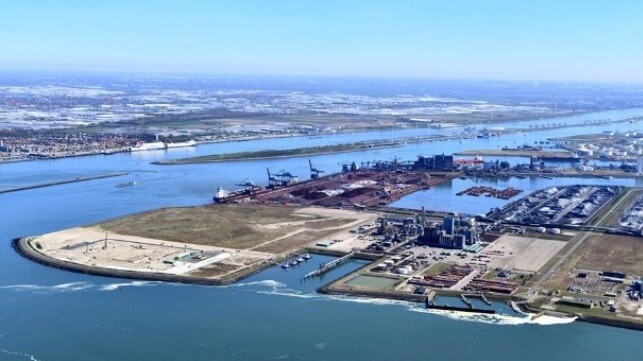Fears Persist of Bunker Fuel Contamination in Rotterdam and Amsterdam

Concerns are being raised over a rising number of cases of contaminated bunker fuel in Rotterdam and Amsterdam, two of Europe’s leading ports. The UK P&I Club has issued a follow-up warning after two independent testing labs warned for much of July that there were cases of elevated levels of contaminants in samples of bunker fuel coming for the region around the Dutch ports as well as possibly in Belgium.
In recent weeks, according to the P&I Club, the commercial shipping industry has witnessed an increase in the number of bunker alerts. Testing firms attribute the rising fuel quality issues to the record 60 percent surge in fuel costs this year.
The P&I Club reports that an analysis of bunker fuel indicates more cases of contaminated fuel in the Rotterdam and Amsterdam areas, suggesting that the problem continues to persist even after fuel testing firms Veritas Petroleum Services (VPS) and CTI-Maritec issued bunker alerts in July regarding the problem.
VPS investigated samples of very low sulfur fuel oil (VLSFO) taken in the area of the Dutch ports following reports that vessels using the fuel were experiencing operational problems such as excessive wear of fuel pump plungers, barrels, and injectors. One vessel lost propulsion and had to be towed they reported. The failure started with engines unable to take the load due to damage within the fuel system.
Using Gas Chromatography-Mass Spectrometry (GC-MS) analysis methodology, numerous volatile organic compounds like phenols, styrenes, alcohols, and ketonic compounds ranging up to 40,000 parts per million (ppm) or four percent in total were detected in the fuel samples.
“This range of combinations does not originate from normal refinery processes and indicates contamination,” said Ansuman Ghosh, UK P&I Club Director of Risk Assessment. “Phenol-like compounds are often associated with fuel pump wear and damage.”
He added that further recent analyses by VPS using samples from the same region showed that the fuels had high total acid numbers, and all contained abnormally high potassium levels that can lead to increased combustion deposits.
Another investigation in the area by CTI-Maritec that also included Antwerp in Belgium revealed that several VLSFOs delivered in the region contained the presence of chemical contaminants specifically elevated potassium content and acid number. Forensic analysis of some of the samples also revealed the presence of fatty acids and monoglycerides exceeding 1, 000 ppm, alkylresorcinols exceeding 2,000 ppm, and phenolic exceeding 1,000 ppm, an indication of abnormally high concentrations.
“Due to the severity of the machinery problems faced, we urge vessel operators to continue pre-emptively testing the fuels bunkered in the region by accredited test methods to detect these contaminants assessing the risk each bunker stem has on the vessel machinery,” said CTI-Maritec in a Bunker Flush update late July.
Ghosh also highlighted that the type of problems reported by vessels in the region are similar to those found earlier this year in Singapore when a portion of the fuel supply was found to contain chlorinated hydrocarbon. Although the contaminants were different, P&I Club points out that they caused similar types of damage to vessels. In Singapore, the Maritime and Port Authority was able to use forensic testing to trade the contaminated fuel to a specific tanker that had loaded its cargo in the UAE. Two suppliers were found to have been distributing the contaminated fuel to over 200 vessels with 80 negatively affected. At the time, testing service VPS said it believed more than $120 million worth of fuel was contaminated.
“Due to the severity of the problems faced, it will be prudent to pre-test the fuels bunkered using accredited testing methods as a precautionary measure to detect these contaminants and assess the risk that each bunker stem poses to machinery,” noted Ghosh. He added that during an actual claim scenario, the ability to properly pursue or defend bunker quality claims depends on the quality of the evidence with good record-keeping being essential to the entire process while the importance of proper bunker sampling cannot be overstated.
